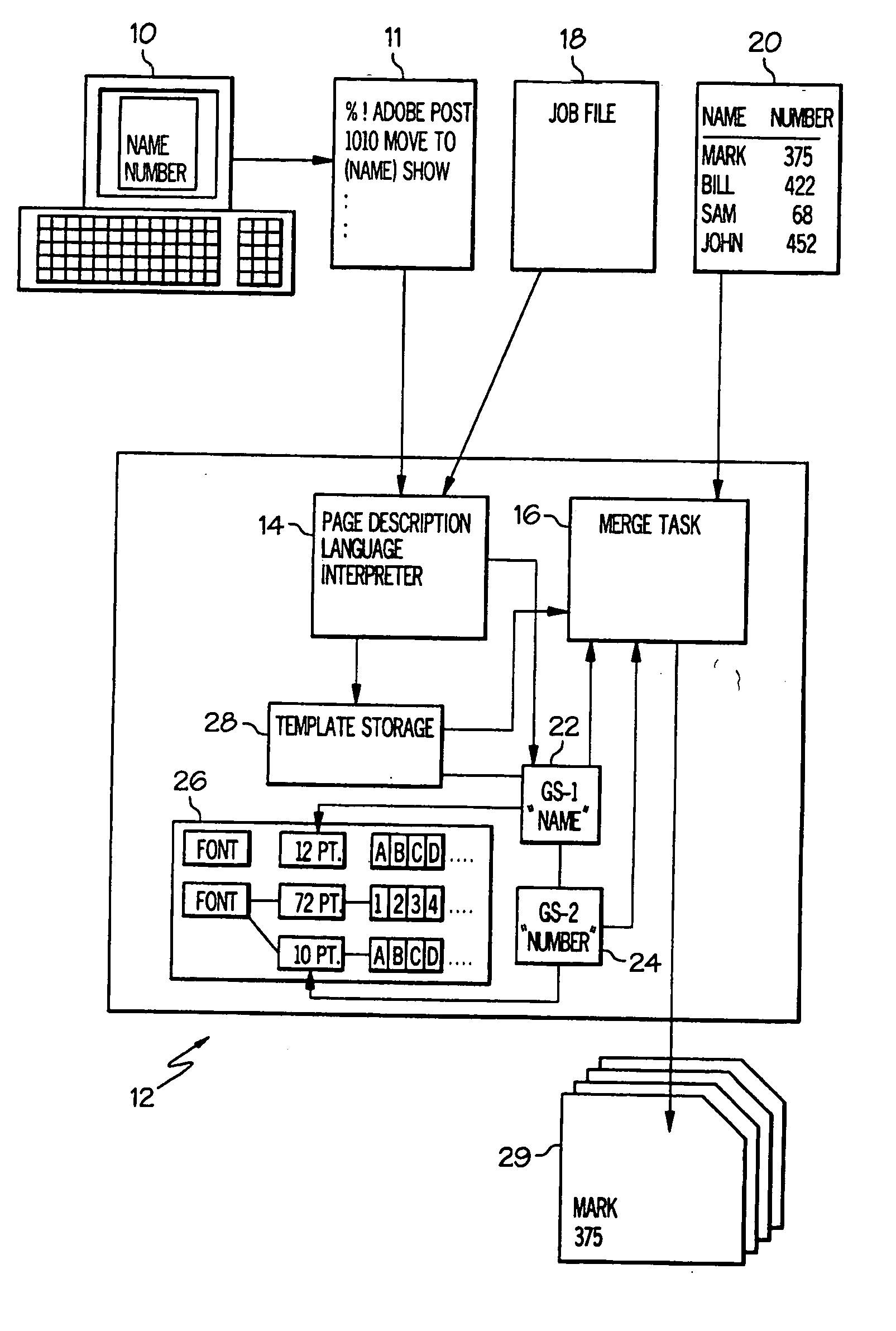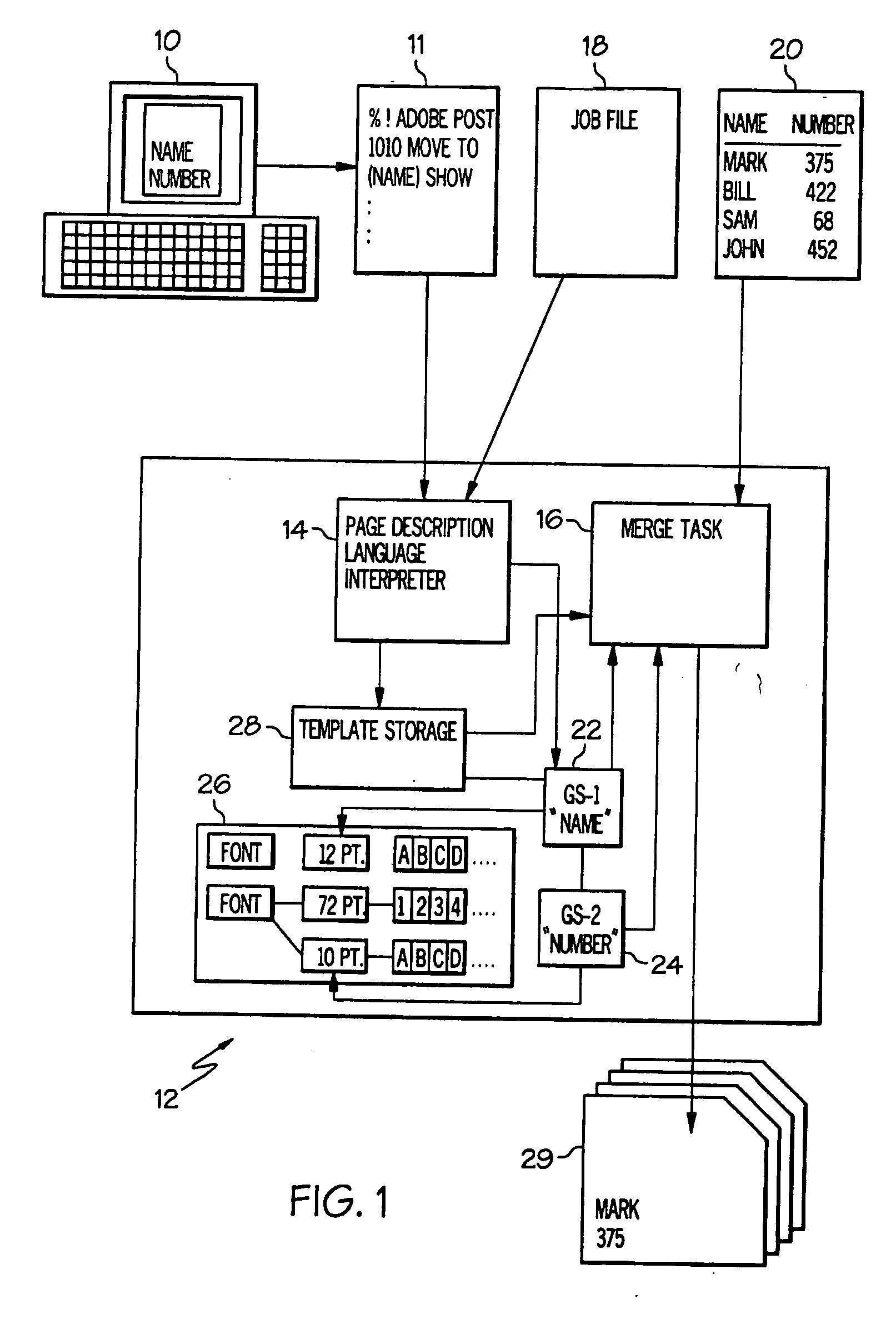Method of utilizing variable data fields with a page description language
- Summary
- Abstract
- Description
- Claims
- Application Information
AI Technical Summary
Benefits of technology
Problems solved by technology
Method used
Image
Examples
Embodiment Construction
[0022] The present invention provides a computer-implemented method for reserving graphics states, which enables a page description language to be used for variable data printing. In accordance with the present invention, graphics states describing variable data areas are generated by a page interpreter program and reserved in an internal database. The graphics states are later accessed from the database and used for printing variable data pages. The method of the present invention can be employed with a conventional page description language, such as PostScript, to enable variable data pages to be printed with a minimum amount of processing.
[0023] As shown in FIG. 1, an image containing text and / or graphics data is created at a workstation 10, using a graphics application program such as Adobe Illustrator®. As the image is created, the application program displays the image on the workstation screen. When the image is complete and ready to be printed as a page, the application pro...
PUM
 Login to View More
Login to View More Abstract
Description
Claims
Application Information
 Login to View More
Login to View More - R&D
- Intellectual Property
- Life Sciences
- Materials
- Tech Scout
- Unparalleled Data Quality
- Higher Quality Content
- 60% Fewer Hallucinations
Browse by: Latest US Patents, China's latest patents, Technical Efficacy Thesaurus, Application Domain, Technology Topic, Popular Technical Reports.
© 2025 PatSnap. All rights reserved.Legal|Privacy policy|Modern Slavery Act Transparency Statement|Sitemap|About US| Contact US: help@patsnap.com



